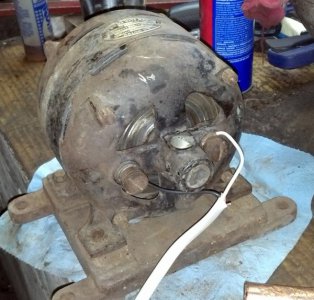Hi gents! This is my first post. I'm an engineer by trade, and have long wanted a small hobby machine in my garage to make parts for my other hobbies (restoring motorcycles, machines, etc). I've recently been given a small Atlas/Craftsman 3950 (With the cast iron housing) that had been stored for many years.
The ways were pretty rusty when I got the machine, but cleaned up ok. There is certainly some wear on them, especially close to the chuck.
The idler pulley was very very worn, so I pressed out the bushing, turned the worn shaft down to the next available drill size, and put a new bushing on. It is nice and tight now, and I hope it lasts another 40 years.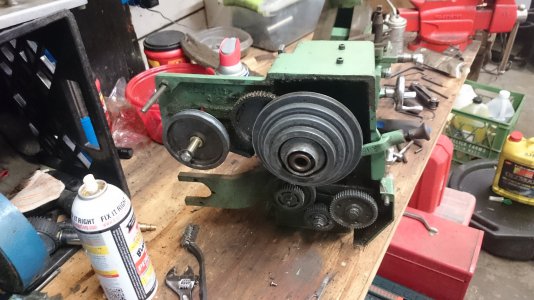
The coupling was also stuck, but I got it unstuck and the backgears seem to work well now. I still need to clean up the entire gear train, as they are coated in a grease that has dried to a tar-like consistency. I'll pull them off and clean them on a tank of diesel.
Some items of concern:
One of the handles is broken on the carriage (crossfeed handle). Are there replacements available? Preferably something that isn't pot metal
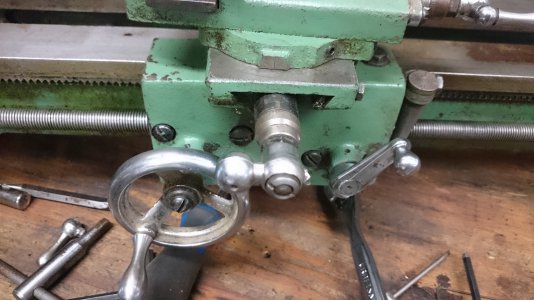
Is there a backlash adjustment for the crossfeed and the compound slide? There seems to be a lot of backlash (although I am spoiled by the lathes at work and I am not sure what to expect out of a hobby machine)
The automatic feed doesn't work/ work sporadically. The lead screw turns well, and the half-nut lever actuates the half nut correctly, but it only sporadically feeds forward. I think the half-nut has stripped threads, but I haven't had it off to check.
When I got the lathe, there was a motor controller bolted to the top. I assume it is a DC motor controller based on what is inside. Can anybody help me identify the model # and the hp rating of this controller? There is a 2A fuse on both the "line" and "armature" fuses.
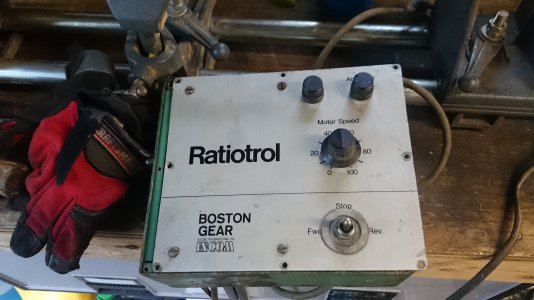
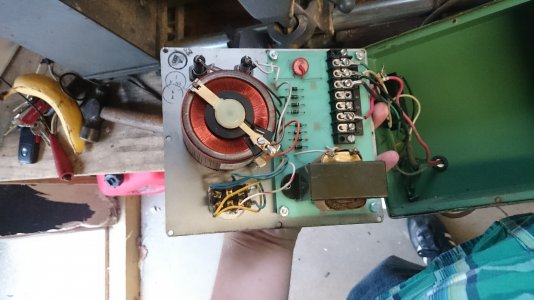
The lathe also came with a motor, which I first thought was a DC motor (as it had brushes and I assumed it went with the motor controller). I tried powering it wit DC, and it just hummed at me. I took it apart, and it looks to be a very old RI motor.
Thanks, and look forward to making some chips!
The ways were pretty rusty when I got the machine, but cleaned up ok. There is certainly some wear on them, especially close to the chuck.
The idler pulley was very very worn, so I pressed out the bushing, turned the worn shaft down to the next available drill size, and put a new bushing on. It is nice and tight now, and I hope it lasts another 40 years.

The coupling was also stuck, but I got it unstuck and the backgears seem to work well now. I still need to clean up the entire gear train, as they are coated in a grease that has dried to a tar-like consistency. I'll pull them off and clean them on a tank of diesel.
Some items of concern:
One of the handles is broken on the carriage (crossfeed handle). Are there replacements available? Preferably something that isn't pot metal

Is there a backlash adjustment for the crossfeed and the compound slide? There seems to be a lot of backlash (although I am spoiled by the lathes at work and I am not sure what to expect out of a hobby machine)
The automatic feed doesn't work/ work sporadically. The lead screw turns well, and the half-nut lever actuates the half nut correctly, but it only sporadically feeds forward. I think the half-nut has stripped threads, but I haven't had it off to check.
When I got the lathe, there was a motor controller bolted to the top. I assume it is a DC motor controller based on what is inside. Can anybody help me identify the model # and the hp rating of this controller? There is a 2A fuse on both the "line" and "armature" fuses.


The lathe also came with a motor, which I first thought was a DC motor (as it had brushes and I assumed it went with the motor controller). I tried powering it wit DC, and it just hummed at me. I took it apart, and it looks to be a very old RI motor.
Thanks, and look forward to making some chips!

